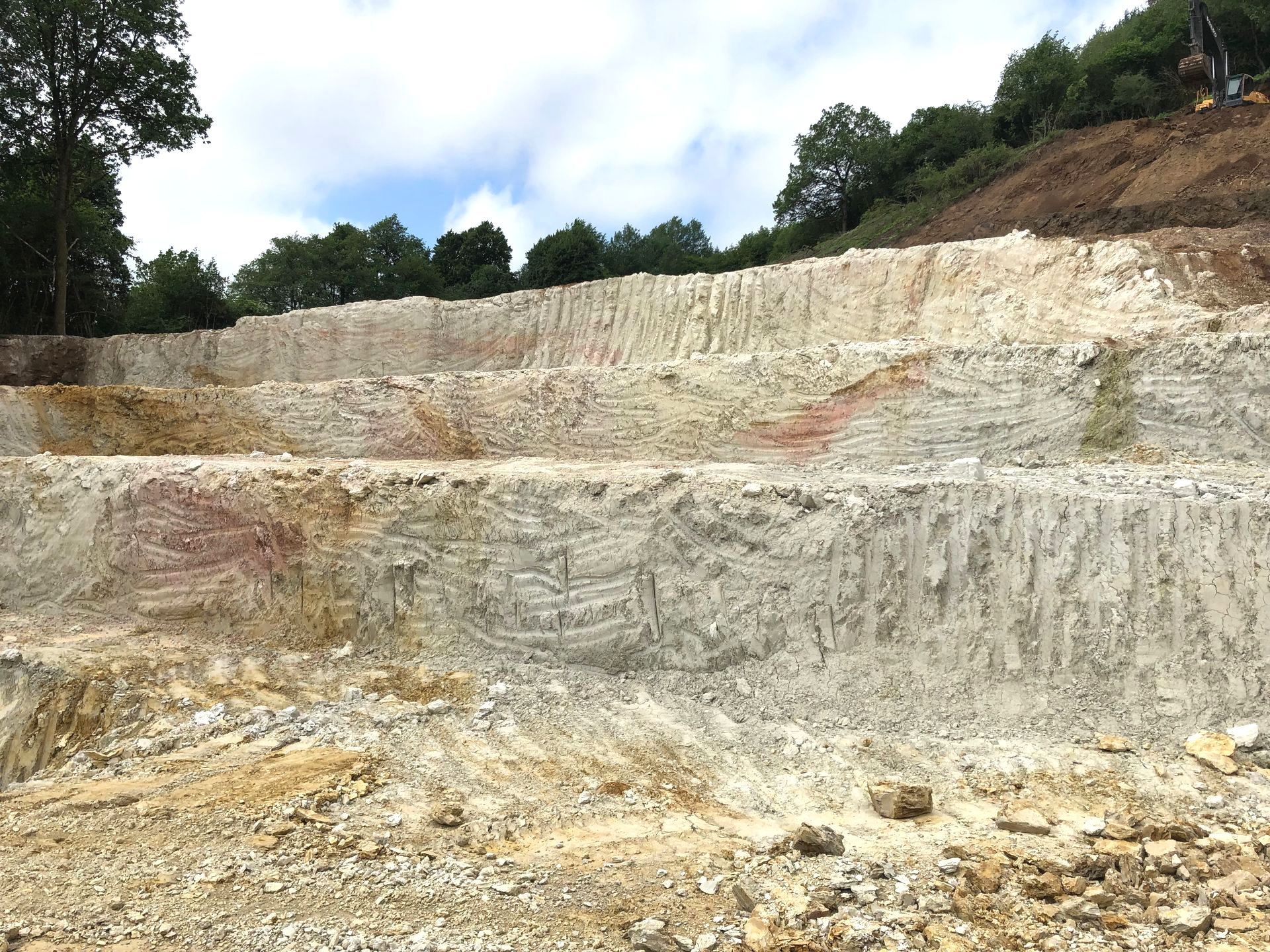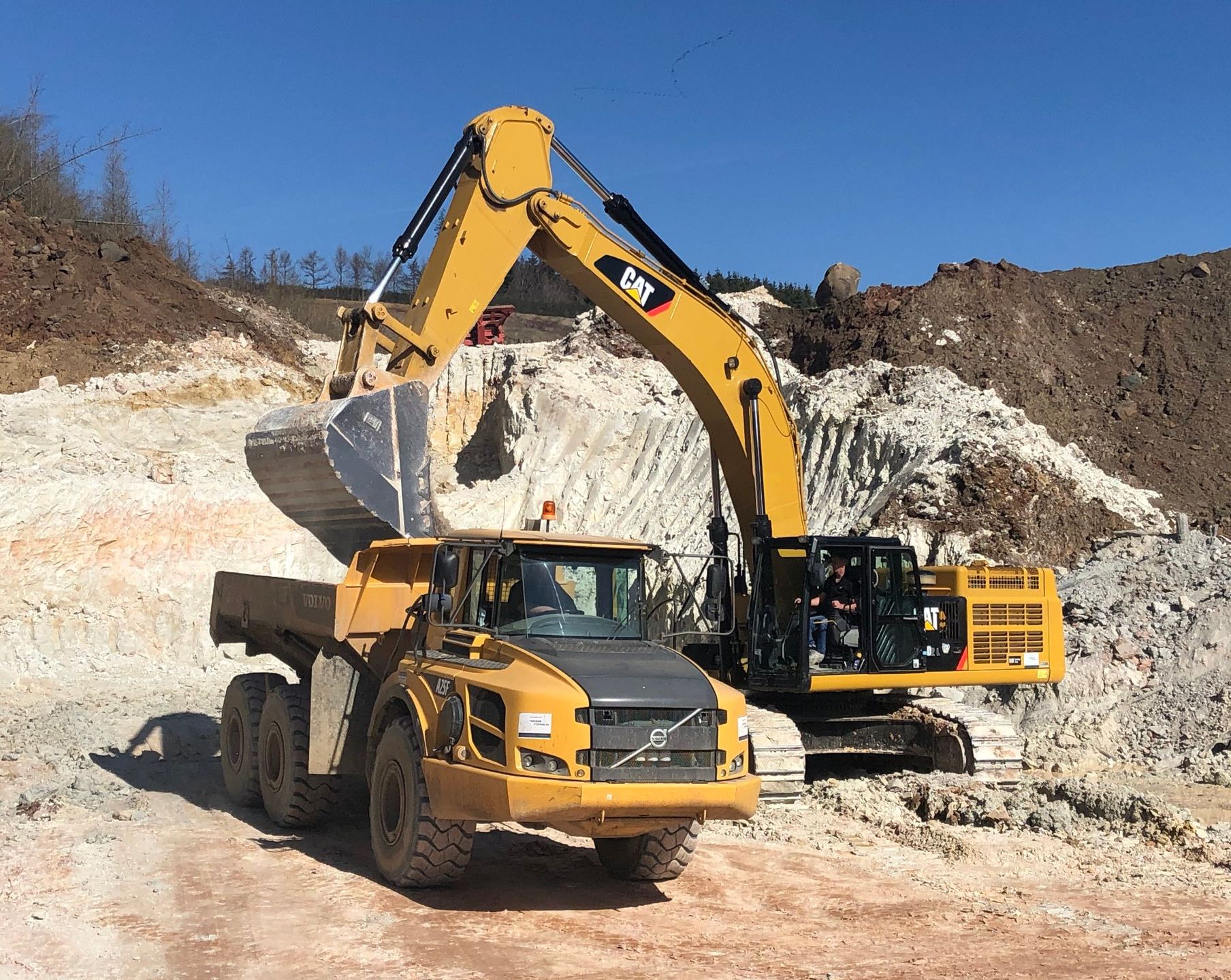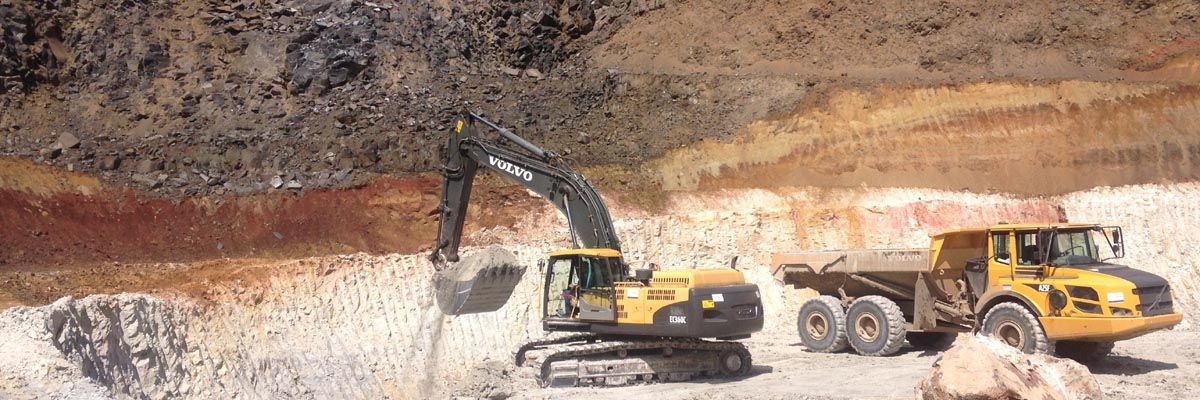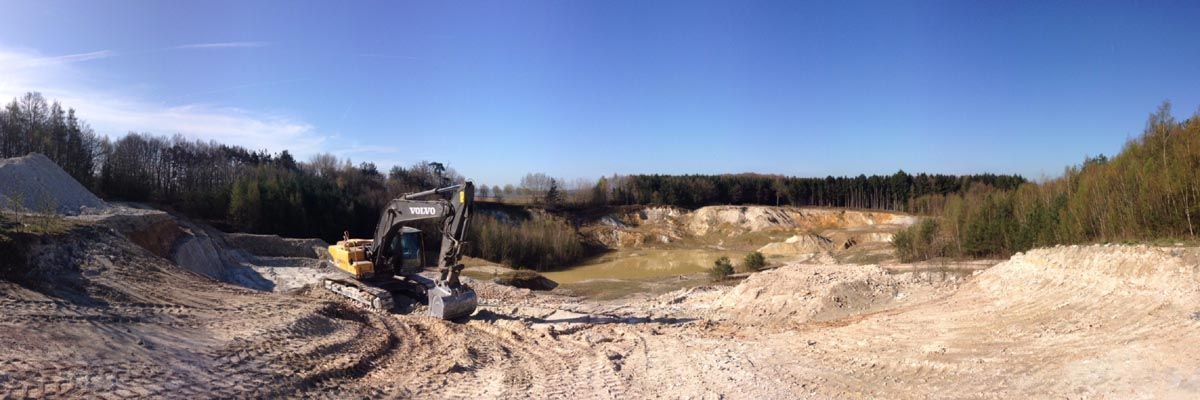Clay pit
The clay pits
of Theodor Stephan KG
Before clay can be further processed and the positive properties of this raw material can be used, it must be extracted from a clay pit. Theodor Stephan KG operates not just one clay pit but two: the “Auf dem Kreuz” clay pit in Burbach in Siegerland, North Rhine-Westphalia and the “Augusta-Oelkaut” clay pit in Oberbrechen and Niederselters in the Taunus. In these we obtain clay of various types and can therefore meet the various requirements of our customers.

What is the importance of a clay pit?
As a natural raw material, clay is of great importance in the building materials industry and is even considered a basic raw material. No wonder, as it not only serves as the basis for roof tiles and bricks, but is also fundamental for tiles, sanitary ware, façade clinkers and pavers. All of these building materials, which are required for every construction project, are made from fired clay. But clay also provides valuable services outside the building materials industry, for example in the production of flower pots, as a functional filler for rubber, paints, adhesives and friction linings or to improve the soil in the agricultural sector, to seal landfills or hydraulic structures.
How is clay extracted?
But where does clay come from? It is extracted using construction machinery in a clay pit and then processed. The extracted raw clay is homogenized in large dumps or in the mixing plant. The raw clay is then further crushed using a roller crusher. What was once coarsely mined from the clay pit is now a product with consistent and predictable properties. Depending on the application, the clay is then delivered as earth-moist shredded clay or it is ground-dried in a further processing stage and sold as a powder.

The “Auf dem Kreuz” clay pit
Theodor Stephan KG operates the “Auf dem Kreuz” clay pit, the only clay deposit in South Westphalia. Clay has been extracted from the clay pit located at the border triangle of North Rhine-Westphalia, Rhineland-Palatinate and Hesse since the 1920s. This deposit is known because of the clay type “Kreuzton” well-known in ceramics. This is a light-burning, plastic slate clay with particularly positive properties such as good liquefaction and equally good drying properties combined with high purity and homogeneity. This makes Kreuzton suitable for almost all types of ceramics.
The clay pit “Auf dem Kreuz” is a primary deposit. This means that the raw material was created and remained on site. The erosion was prevented by a 15 to 40 meter thick layer of basalt. Due to large raw material reserves and a long-term approved mining site, the supply of raw materials from our clay mine is secured for the next decades.

The “Augusta-Oelkaut” clay pit
The clay pit “Augusta-Oelkaut” operated by us is also a primary deposit. Raw kaolins have been mined here since the 1950s. The raw kaolins obtained in this clay pit are finely ground in our grinding plant in Burbach. They are then delivered to customers as functional fillers for many high-quality mineral applications. The clay pit “Augusta-Oelkaut” will also ensure the supply of kaolin for decades.



